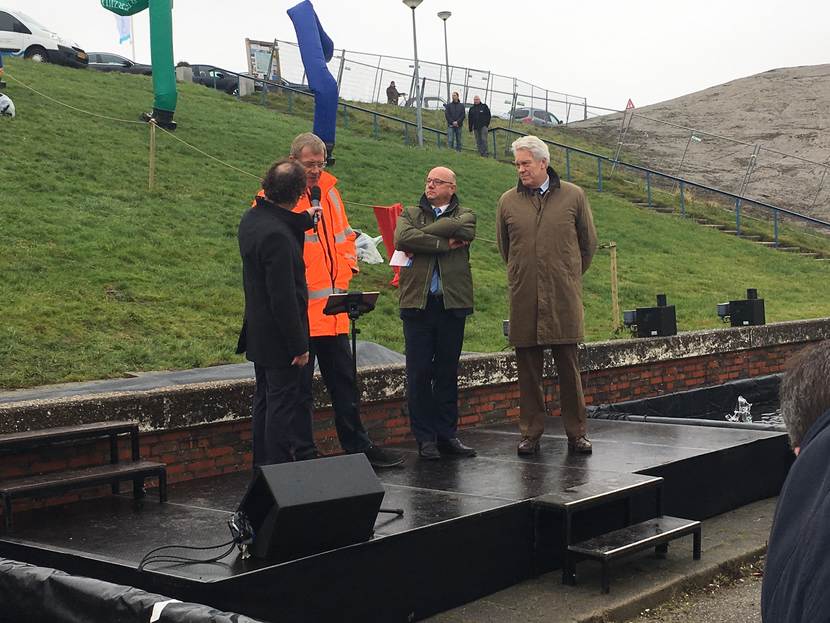Construction of the first earthquake resistant dyke has begun
Today work began on improving the dyke between Eemshaven and Delfzijl. This dyke improvement project is implemented under the Flood Protection Programme and therefore falls under the Delta Programme. Delta Programme Commissioner Wim Kuijken and Eisse Luitjens, deputy dyke warden of the Noorderzijlvest district water board, fired the starting gun, together with the various collaborative partners and year groups 6/7 from De Garven primary school in Delfzijl. After giving a performance representing the elements that affect the dyke - water, wind and soil - they rolled a large canvas out over the dyke at Delfzijl.

The 12-kilometre-long seawall is the first dyke in our country that is being reinforced in accordance with the latest safety standards (2017) and an earthquake-resistant design. It is also a dyke improvement that focuses on innovation and the promotion of wildlife, recreation and the economy. Delta Programme Commissioner Wim Kuijken: “This dyke improvement is unique in two ways. The dyke is being constructed in accordance with the new safety standards and it will be earthquake-resistant. Dyke innovation is also involved, with a double dyke and the addition of wildlife goals and recreation opportunities. Altogether, this is being made possible by the intensive cooperation between all parties involved, entirely in accordance with the approach of the National Delta Programme. In my view, the Eemshaven-Delfzijl dyke improvement project is a good example of modern hydraulic engineering in the Netherlands and it is contributing to making the province of Groningen safer.”

Solid dyke
Owing to rising sea levels, climate change and, specific to this region, earthquakes and ground subsidence, this dyke improvement is necessary to prevent flooding in the future. Once its improvement is completed in 2019, the dyke will meet the new safety standards that apply to all dykes in the Netherlands starting in 2017. The dyke is also being made earthquake-resistant. This can be accomplished in different ways, such as by installing steel dyke walls in the dyke and adding extra reinforcement. With the help of specialists from all over the world and from countries in which earthquakes are much more common, the extent of the problem was investigated and solutions were sought.

Millions in investment
The Flood Protection Programme is investing 114 million euros in the Eemshaven-Delfzijl section. The Noorderzijlvest district water board is adding another 9.7 million euros to that sum. Other investors involved include the Commissie Bodemdaling (Ground Subsidence Commission), the Province of Groningen and the Municipality of Delfzijl. The NAM will cover the costs of making the dyke earthquake-resistant and the Commissie Bodemdaling will bear the costs of subsidence due to natural gas extraction.